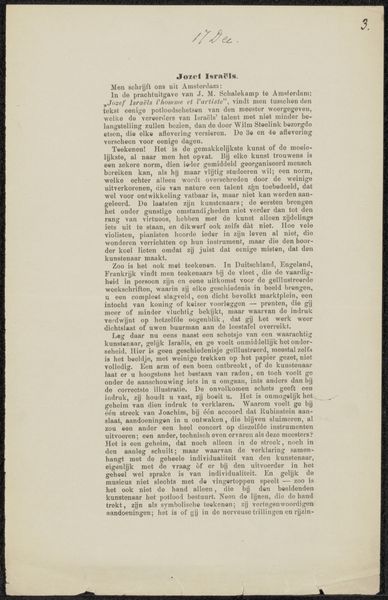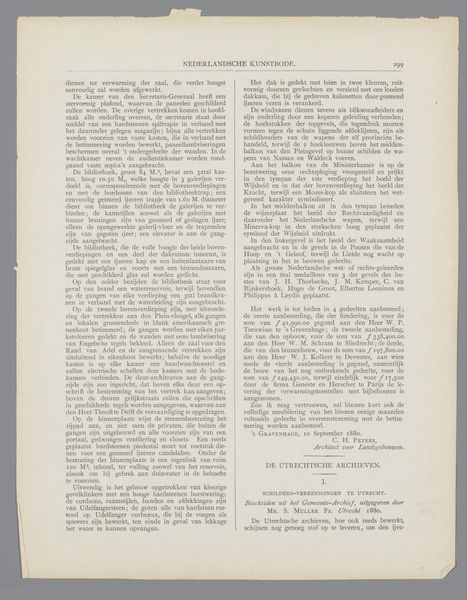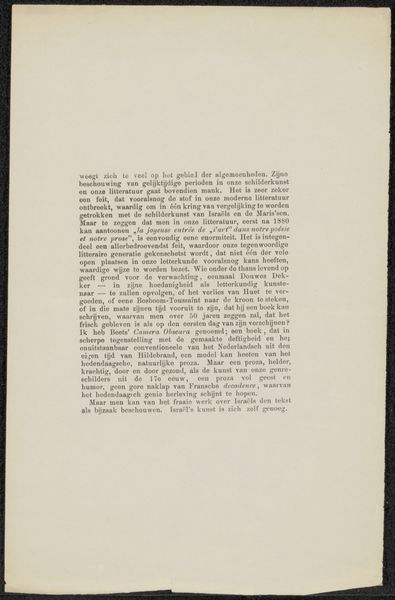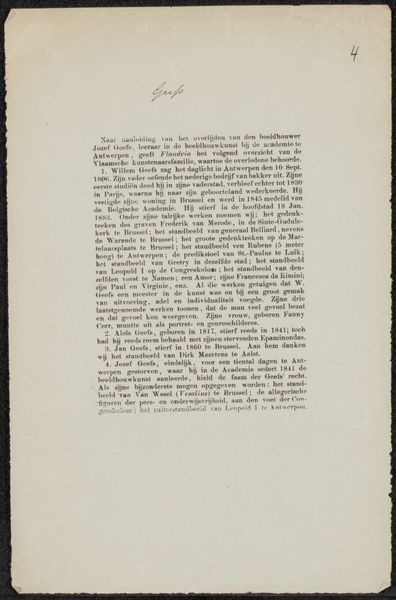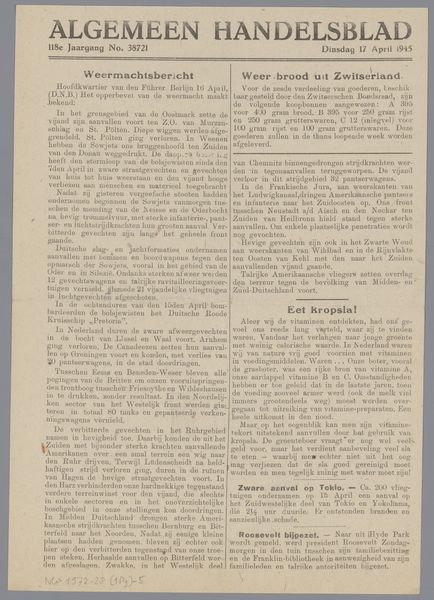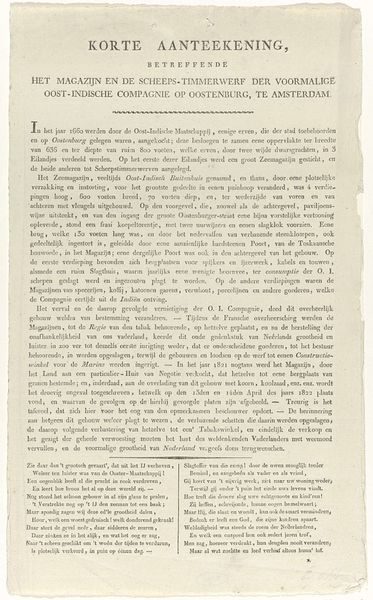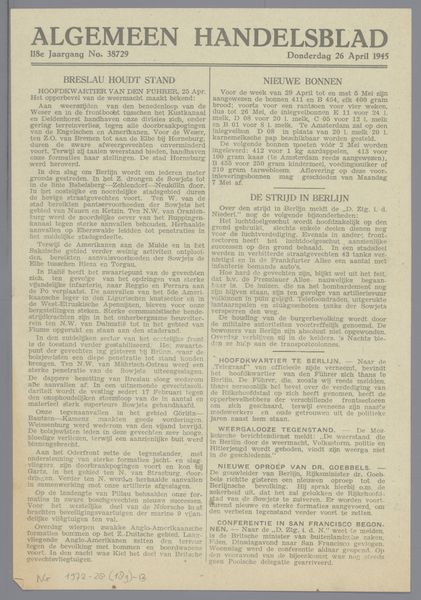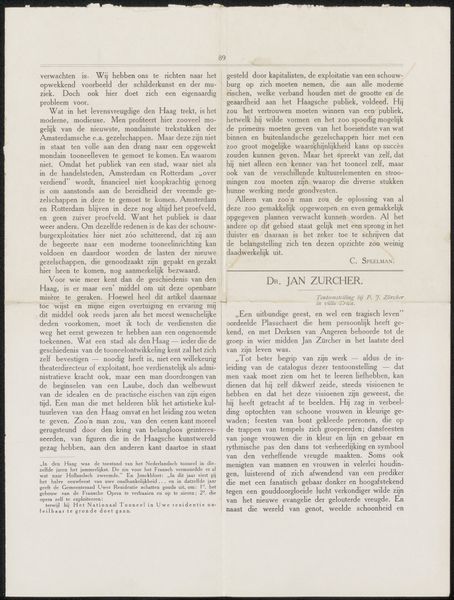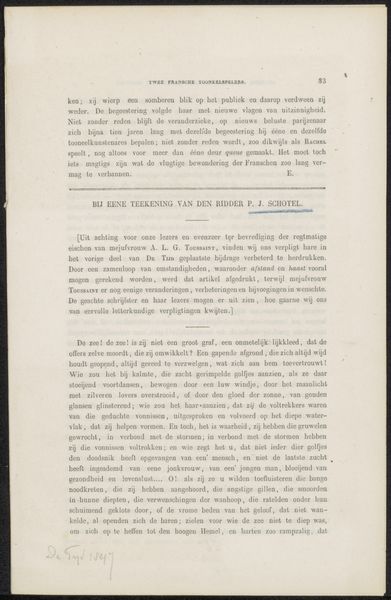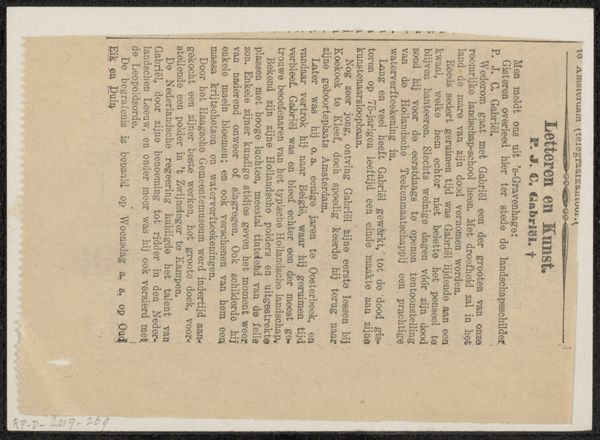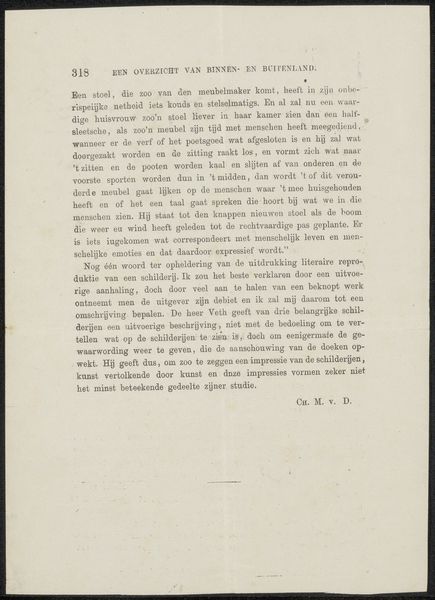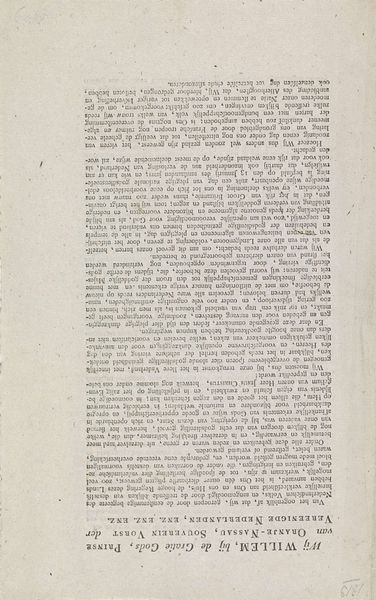
graphic-art, print, textile, paper
#
graphic-art
# print
#
textile
#
paper
Copyright: Rijks Museum: Open Domain
Curator: Well, here's a fascinating object! This is actually a page taken from a larger text, "Artikel over Jozef Israëls," dating from after 1890. Editor: It feels...fragile, almost spectral. Looking at the scan of this aged page, I get this intense sensation of peering through time, seeing these faded words dance before me like ancestral memories. Curator: Absolutely. It's held in the Rijksmuseum’s collection and classified as graphic art; we see the artistic medium here manifested as printed text on paper, although you will find that they employed textiles within this artwork. The artist is, for now at least, listed as anonymous. What's particularly interesting is the written analysis about Jozef Israëls’s artistry. Editor: So, it's essentially art critiquing art? It’s meta in the most wonderfully antiquated way. It has a wistful and reflective quality, the curator is searching through all these lines about "droomerijen"…the artist's dreams, " Genesis zijner werken" and talking about intimate thoughts—it's all rather hauntingly poetic. Curator: I’d suggest that it provides a look into the cultural reception of Israëls’s work during that time. We often focus on the visual, but the discourse surrounding art reveals so much about societal values and aesthetic preferences. For instance, the way the author emphasizes feeling—"buitengewoon fijn gevoel" when discussing Jozef—places emotional response centrally in appreciating art, and specifically this sentiment resonates. Editor: It's interesting how tastes have evolved or devolved since! It’s a testament to the idea that art isn't just about seeing. There’s this implicit dance—that’s something about "een gedicht in lijnen", it's all intertwined… Curator: I find this emphasis revealing, particularly given Israëls’ focus on portraying the lives of common people. The text dissects his pieces, referring to ship-breaking, and children on the sea and overall sentiment! Editor: Indeed. To me, it shows how critical writing, especially when artfully done, can become its own form of expression and enrich our engagement with creative endeavoring. The visual form—faded text against the aging paper—blends seamlessly with that introspective, historical awareness… Curator: In the end, I’m impressed by its resonance. The text beckons exploration. What was life, societal values, discourse—and aesthetic preferences? Editor: A poignant reminder, the quiet beauty hidden within the layers…
Comments
No comments
Be the first to comment and join the conversation on the ultimate creative platform.
